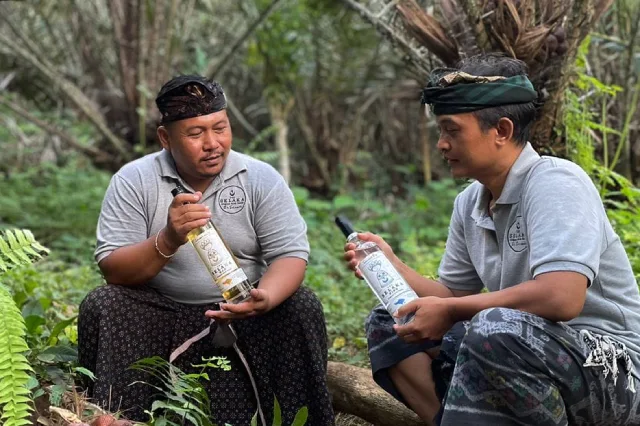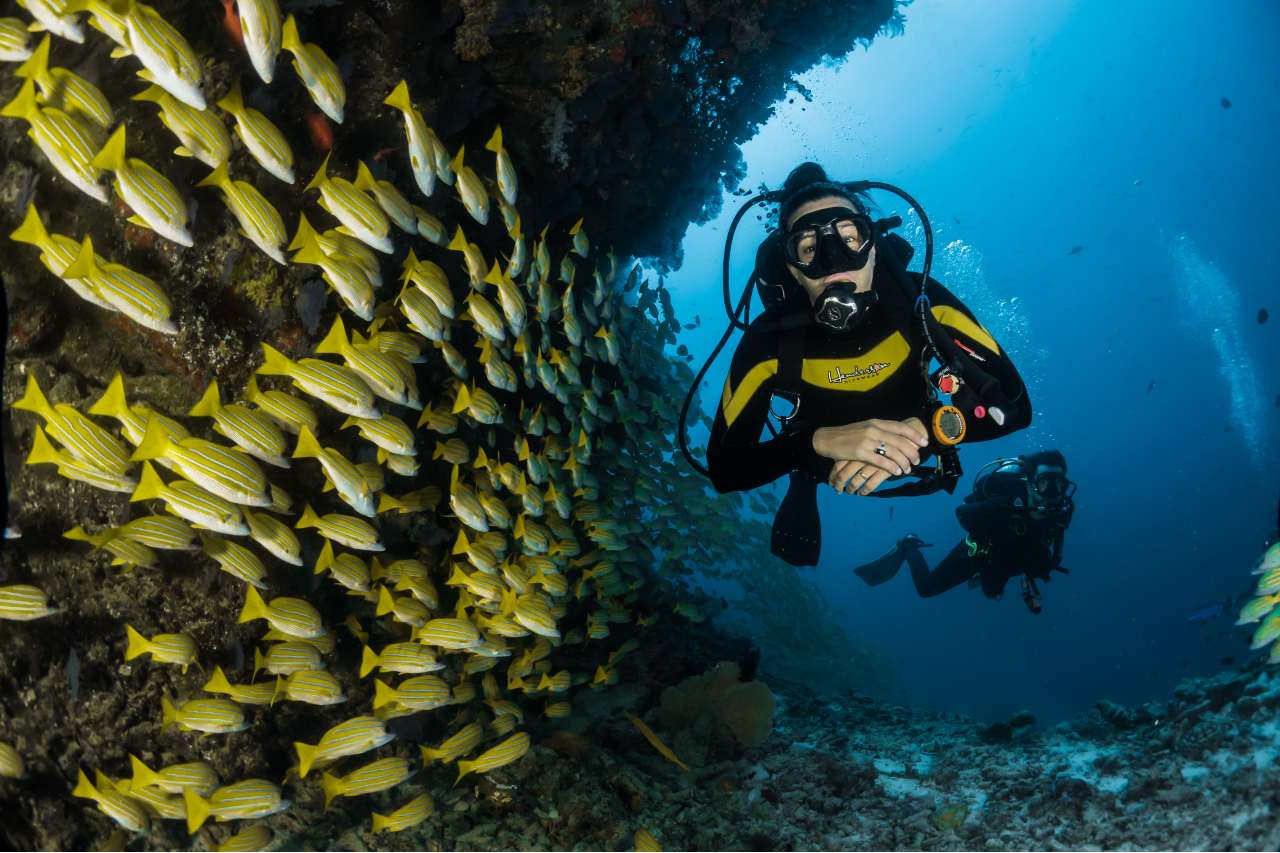Things to Do in Bali
Introducing Amed & Tulamben
The area is home to two quiet, down-to-earth fishing villages in Bali’s northwestern region, and it is well-known for scuba diving and snorkeling, nature tours, and amazing views from Mount Agung. The less well-known beaches and villages of Jemeluk, Lipah, and Selang are nearby and well worth a visit.
#diving #remote #blacksand #raw #simple #nature #apnoe #quiet #yoga #serene #backpacking
Scuba Diving in Bali GuideAMED & TULAMBEN GUIDE – BALI
Amed & Tulamben is known for…
- Beautiful Snorkel and Dive Spots
- Traditional Salt Farming
- Community of Yoga and Diving
- Free / Apnoe Diving
- Black Beaches
- A Weekend Getaway Destination
How is Amed & Tulamben in general?
A diver’s paradise to descend into the underwater world
Amed & Tulamben are a perfect example of a secluded and natural part of Bali. The destination has large stretches of black sand beaches, which are rarely visited by tourists due to how far and remote it is from the more popular areas. It will take about a three-hour drive to get to Amed from the south. Visitors who come up to this place are mainly divers and those looking for a tranquil place to de-stress and use the region as a hub for tours to explore the nature up north..
Amed & Tulamben – Guide & Insights
Almost all of the hotels here are small establishments by the beach, making it possible to walk out of your room with direct access to the ocean. Though most activities surround Amed beach, some of the accommodation stretches as far as the beach and even a 10-minute drive further down just a little bit past Jemeluk Bay.
Hotel & ResortsFrom charming guest houses to cottages, Amed serves their guests with decently private and fan-cooled rooms. More mid-range bungalows and modern villas that provide air-conditioned rooms and swimming pools have recently popped up as well to accommodate tourists who prefer a higher level of comfort. Nonetheless, having an ocean view in one of the remote areas creates an unbeatable experience in Bali that is constantly developing, so don’t miss out on a chance to enjoy this undisturbed region before crowds of tourists start spreading to this side of the island.
AccommodationFrom ‘catch-of-the-day’ meals, local cuisine, and western dishes, upscale eateries have popped up in and around Amed. These restaurants serve mostly western food with a number of choices for authentic local cuisine. A more affordable alternative are local family-owned businesses with delicious home-cooked style food. There is still an eclectic variety available for visitors who may be worried about being in a remote area, so don’t fret as the number of places to eat in Amed are always increasing.
Going outLive music performance by local bands is typical entertainment in Amed. It gets quiet at night with only a few bars serving cold beers and cocktails. Despite the lack of dining options you would normally find in the south, the night scene is still just as fun with reggae music in the air. It’s a decent place to have a couple drinks and enjoy the ocean breeze, it has a certain charm you can only get away from the commotion of tourist areas.
Going outDiving is the main activity when coming to Amed and Tulamben. The coast along Amed is mostly covered with rocks, which gives the area a very different look from the rest of Bali, especially with the bewitching black sand. The Beaches are known as some of the most peaceful. The water here is always gentle and usually free of currents, and snorkelling directly offshore is terrific with an abundance of fish surrounding you everywhere you turn.
Because the area is less populated by tourists, you’ll find the beaches not as polluted, so you’ll be able to see healthy coral reefs and clear blue oceans ready to enchant you below the water. The diving schools in the area can provide training and even tours on whatever you are looking to do, whether it’s free diving, snorkeling in the nearby shores, or even scuba diving.
Beaches bali's Dive SitesThe vantage point atop of Jemeluk Bay makes the trip up to Amed all the more worthwhile, you can even see the volcano Mount Agung in the distance. However, the real places that would really take your breath away lies beneath the land surface. People come to Amed mainly for its diving sites. Some visitors use Amed as a starting point to visit Tulamben and dive to see the shipwreck of the USS Liberty. The USS Liberty is one of many popular underwater attractions as it is a fascinating sight underwater for both the beginner and pro divers. Following Amed beach down to Lipah lies another shipwreck from the Japanese. It has become a shelter of beautiful plate corals and fluorescent gorgonians you can snorkel towards. This underwater site is perfect for beautiful shots, but be mindful of the wonderful marine life thriving that calls the shipwreck home.
The villages of Amed and Tulamben, located on the northeastern coast of Bali, have a rich history of salt farming and fishing that dates back for generations. These traditional practices have been essential to the livelihoods and culture of the local communities in the region.
Salt Farming in Amed:
1. Salt Pans: Amed is known for its unique salt farming, which involves the use of coastal salt pans. These salt pans are shallow, man-made ponds or terraced fields near the coastline. Seawater is allowed to flow into these pans during high tide.
2. Evaporation Process: As the seawater fills the salt pans, the water is left to evaporate under the sun’s heat. As the water evaporates, it leaves behind salt crystals on the surface of the pans.
3. Harvesting Salt: Once the seawater has fully evaporated, the salt crystals are carefully harvested by local farmers. The salt is then collected, cleaned, and stored for further processing or sold locally.
Fishing History in Tulamben:
1. Coastal Fishing Village: Tulamben, historically a small fishing village, was primarily known for its fishing activities. The village is situated near the ocean, providing easy access to the bountiful marine resources.
2. Traditional Fishing Methods: In the past, local fishermen in Tulamben relied on traditional fishing methods, such as using outrigger canoes and simple fishing nets, to catch fish and other marine creatures.
3. Transformation into Dive Destination: In the 1960s, the discovery of the USAT Liberty shipwreck off the coast of Tulamben transformed the village into a renowned diving destination. The wreck, a remnant of World War II, attracted divers from around the world, leading to the growth of tourism in the area.
4. Coexistence of Fishing and Tourism: Despite its popularity as a diving destination, Tulamben has managed to maintain its fishing heritage. Today, you can still find local fishermen casting their nets and venturing out to sea to catch fish for their families and the local market.
Cultural Significance:
The practices of salt farming and fishing hold significant cultural value for the communities in Amed and Tulamben. These traditional activities have been passed down through generations, with knowledge and techniques transmitted from elders to the younger members of the community. Salt farming and fishing are not only a means of subsistence but also a source of pride and identity for the villagers.
Visitors to Amed and Tulamben have the opportunity to witness these traditional practices, interact with the local communities, and gain insights into the unique cultural heritage of these coastal villages. The appreciation of these time-honored traditions adds to the charm and authenticity of these beautiful locations on Bali’s northeastern coast.
Amed and Tulamben can be hard to get to and require careful driving through dirt roads, so it is best to come with a driver. Motorbikes can be rented to get around once you are there—most of the tourists coming on Friday are picked up on Sunday afternoon by a car. But if you are an adventurous traveller, going on a long scooter ride can be a great trip. The view of the Abang area in Karangasem is very beautiful, with wild monkeys swinging around from one tree to another.
Car Rental with Driver Scooter RentalGeneral Tips for Amed & Tulamben
It’s probably best to stay in Amed if you’re looking to explore Tulamben, as it’s just a short drive away. Amed offers a diverse landscape with sandy and rocky beaches, mountains in the background, and a close-knit community in between. The journey to Amed follows winding roads leading to the famous hilltop viewpoint at Jemeluk Bay. This spot is a must-visit, especially during golden hour when many cafés and restaurants fill with guests.
-
Diving and Snorkeling Paradise: Amed and Tulamben are renowned for exceptional diving and snorkeling. Be sure to explore the world-famous USAT Liberty shipwreck in Tulamben and the vibrant coral reefs in Amed.
-
Explore Amed’s Coastal Beauty: Amed is known for its beautiful black sand beaches and serene fishing villages. Rent a scooter or bicycle to explore the coastline, witness traditional salt-making, and experience the local culture.
-
Traditional Salt Farms: In Amed, you can witness the traditional salt-making process. These salt farms offer unique insight into the traditional Balinese way of life.
-
Mount Agung Trekking: Amed and Tulamben are close to Mount Agung, Bali’s highest volcano. If you’re adventurous and physically fit, consider trekking to the summit for a breathtaking sunrise.
-
Spectacular Sunrises: Both Amed and Tulamben offer stunning sunrises over the Bali Sea. Rise early to witness these magical moments.
-
Respect Local Customs: Bali is known for its rich culture and traditions. Dress modestly, especially when visiting temples and sacred sites, and be respectful of local customs.
-
Pack Light and Casual: Due to the warm and humid climate, pack light, breathable clothing, along with swimwear and sunscreen.
-
Cash is King: While some places accept credit cards, it’s advisable to carry cash, especially in more remote areas.



























